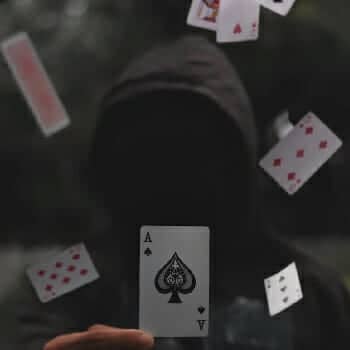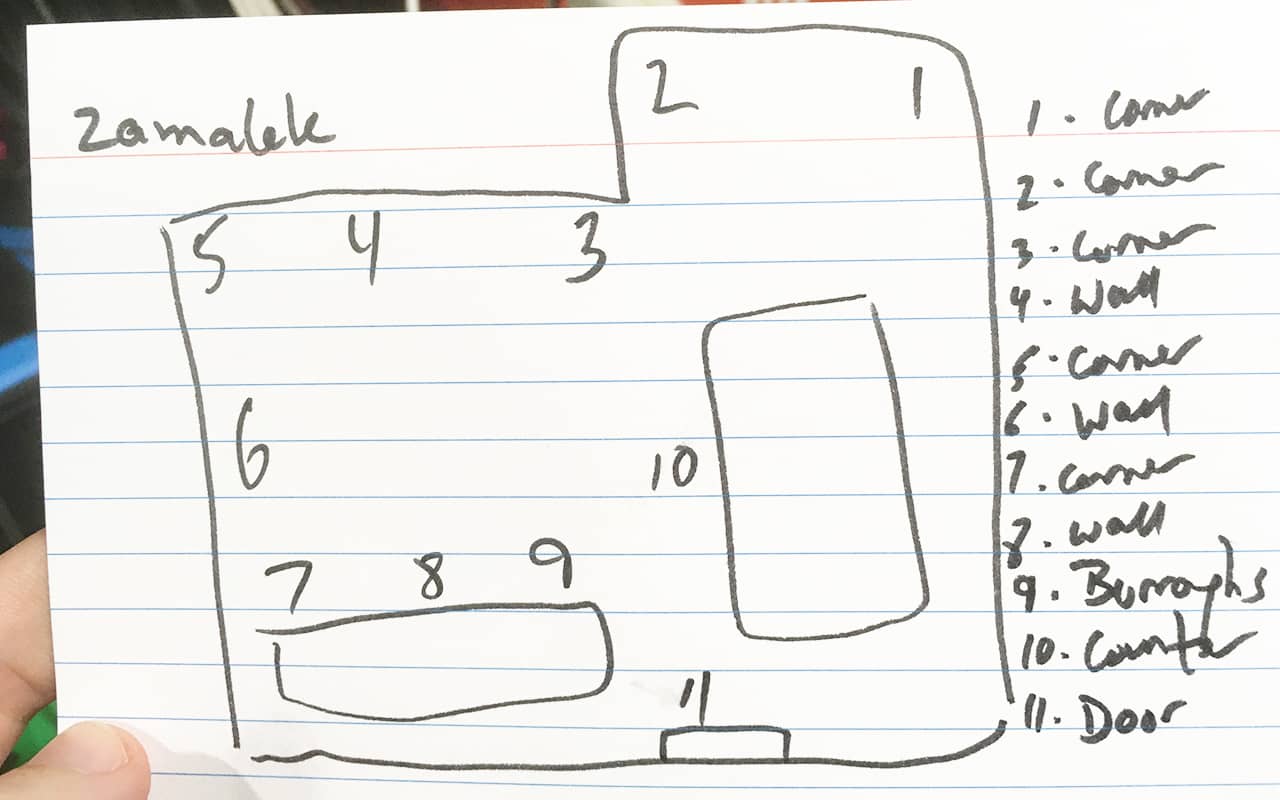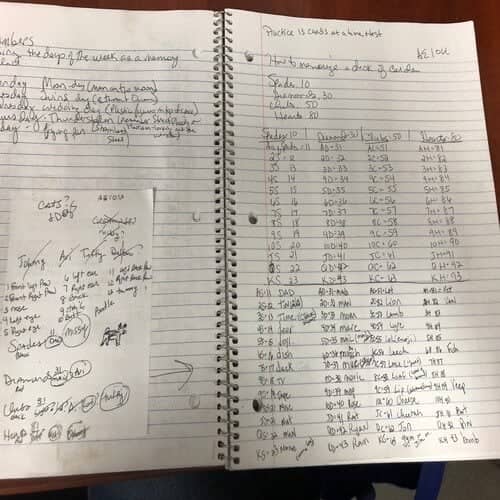
And if you’re like like a lot of magicians, you’re reasonably worried about managing that memorized stack order while performing.
Worse, so many magicians who teach memdeck work poo-poo using memory tricks.
They swear that rote learning is the best for all magicians and mentalists. And they say this knowing that magicians like Harry Lorayne and Darwin Ortiz use mnemonics.
Frankly, I was horrified when one magician told me this at a magic convention in Brisbane. He simply would not accept that memory techniques can and do indeed help many magicians.
So let me just lay my cards out there, if you’ll forgive the pun.
I’ve not only memorized stacks using mnemonics. I’m a huge advocate of the techniques used in rapidly committing cards to memory.
Sharing these techniques with people is my passion. And that’s exactly what I’m going to do on this page.
So if you’ve always wanted to get into using a memdeck, but found the memorization and management during performance daunting, you’re in luck.
You’ll learn exactly how to do memorize any stack you like and walk away with a few simple and fun tricks.
I’ll even show you how to keep multiple stacks in memory too.
Ready?
Let’s dive in!
What Are Memdecks (And Why Are They So Useful?)
In case you’re new to memorizing playing cards and haven’t heard the term “memdeck” before, let me share some common stacks used in magic. And some less common ones while I’m at it for the sake of completion.
“Memdeck” is short for “memorized deck.” In other words, rather than perform magic with a legitimately shuffled deck, you know the order of every single card.
And if you’re really well prepared, you also know the exact number of every card in terms of its position from the top of the deck. (In other words, you know that the King of Diamonds is the 26th card in the Tamariz stack devised by Juan Tamariz.)
The reasons memdecks are useful for magicians are easy to summarize:
- Your tricks become much harder to reverse engineer (if not impossible)
- Your control over the deck increases dramatically
- You can perform “holy grail” magic tricks like David Berglas‘ “Any Card at Any Number”
- You can perform a variety of poker deals with ease
- You can perform spelling tricks that are much more mystifying than non-memdeck versions
- You can use faro shuffles and other mixing methods to quickly establish other stacks
- The same techniques used to memorize cards helps you remember the names of your participants
- Underlying memory techniques like the Major System have great applications in mentalism
- Applications for using an index
- You get great brain exercise that benefits your career at large
As you can see, there are countless benefits when you pick your preferred and easy to learn memdeck stack.
How to Perform Magic Tricks Using a Memdeck
Now that we’re on the same page about why memorized stacks are so powerful, let’s get into the specific steps involved in using them to perform magic.
As we go through these steps, most of them are in order. It’s best not to skip ahead. That way, you’ll avoid unnecessary mistakes.
One: Pick One Stack First And Master It
There are many stacks to choose from. As Martin Joyal documents in his excellent book, The Six-Hour Memorized Deck, there are multiple categories of complete deck stacks.
Then there are systems like Si Stebbins. These are cyclical and operated differently than memorized stacks. True memorized stacks must:
- Involve all 52 cards (and the jokers in specific positions if desired)
- Allow you to cut them as often as required
- Be known forward and backwards, even if cut
- Give you the number of the card and its identity at the same time
- Ideally, they’ll help you determine relationships between cards (i.e. to know where one King is helps you know where all the other Kings are)
- Can be displayed without people seeing a pattern
Joyal has other rules, such as ease of assembly, but I’m not sure about this one. I have no problem manually assembling the various memdecks I use.
Two: Commit Your First Stack to Memory
Now comes the fun part. Unless you prefer rote learning, which has been shown to reduce critical thinking skills.
As I mentioned, many magicians frown upon using mnemonics. I don’t know why, but some people have promoted a variety of mnemonic methods, such as The Memory Arts book.
I teach the process I use in this tutorial for memorizing a deck of playing cards.
In brief, you want to associate a number with an image to each card. Here’s some homework from Sharon, one of my students, who did just that very quickly:
What’s going on here in Sharon’s set of mnemonic examples?
The core of the method is to combine two simple techniques with the Major System:
- Memory Palaces with enough room for all 52 cards
- PAO System
To give you some examples from my memorization of the Tamariz stack, my 4 of Clubs is Jim Carrey slamming a lyre down on a fan. The fan is associated with 2 of Hearts.
Both of these playing cards are in the corner of a Memory Palace. This one took out mere seconds to draw and get into use:

I realize these systems can seem daunting, especially for beginners. But my friend Braden Adams has memorized 70 decks for charity in just a few hours.
And many of my students have done it quickly, such as Maze who submitted this video testimonial and demonstration:
Trust me, as long as you don’t overthink the process, using memory techniques is a no-brainer. But if you can’t wrap your mind around it, consider using the story method instead. It’s close to the method Lorayne teaches and used in his magic.
Three: Practice Recalling The Stack
For this discussion, I’ll assume that you’ve used mnemonic imagery to memorize your chosen stack.
The best way to form long term memory of each stack you commit to memory is called Recall Rehearsal.
Basically, the Memory Palace is used as a spaced repetition alternative to Anki. But it’s a lot more fun, especially because you can even associate your cards with magicians. For example, my 8 of Diamonds is Max Maven.
To perform Recall Rehearsal, journey through your Memory Palace and recall all the cards in these orders:
- Forwards
- Backwards
- From the middle to the end
- From the middle to the beginning
- Skip the stations/cards
- Drop in randomly, perhaps using this dice memory drill
You can also use a random card generator.
When it gives you a random card to find in the deck, first think of your image, think of where it is in the Memory Palace, determine its number, and then test yourself by counting down to that card.
Four: Master False Cuts & Shuffles
Nothing will draw suspicion to a memorized deck faster than being precious about your cards.
It’s ideal if others can shuffle your deck, so consider learning a deck switch. But even if you’re ringing your memdeck in with a deck switch, nothing sells legitimacy better than having others shuffle the deck and having them see you shuffle it.
Five: Pick Tricks You Love
I’m not one of those people who insists that you should start simply. Certainly, that’s not a bad idea. But when I see a trick I love, I don’t let its difficulty stand in the way of learning it.
Mnemonica is one of the most famous sources for memdeck tricks. But the first one I learned is intermediate and taught by Darwin Ortiz in his Penguin Lecture. It’s called “Test Your Luck” and I love it.
It’s also useful to read memdeck tricks that you have no interest in performing. Memorandum has many great ideas and routines, only one of which I’ve performed.
Six: Practice In Low Stress Situations
Once you’ve got a stack memorized and at least one routine learned, it’s time to perform.
Personally, I like to start practicing the performance of any trick with friendly audiences first: family and friends.
To calm my nerves and maximize mental focus, I tell them that I’m working on something new and want their honest feedback.
Then, I usually start with a routine I’m very familiar with to catch them off guard after I switch in the memdeck.
After that, it’s best to record yourself and view your performances before taking them before a paying audience.
Seven: Have Multiple Outs Ready
Most magicians know all about how to deal with mistakes. But the cool thing about memdecks is that you can have a couple of them on you.
That way, if you make a mistake, you can always ring in another memorized stack so you can recover.
But failing that, it’s best to always have another trick to go to so you can jazz your way to a powerful conclusion.
8 Easy-to-Learn Memdeck Stacks
So what memdeck stacks are available to you? For starters, you can pick from:
- Joyal stack
- Tamariz stack (Mnemonica stack)
- Aragón stack (Memorandum stack)
- Aronson stack
- Marlo stack
- Skinner stack
- Redford Stack
- Rix stack
There are more out there. And in some cases, the magicians behind the stacks devised more than one.
But the ones listed here are all great and offer you different features. It’s worth considering each. And now that you know how to memorize any stack, it’s possible to rapidly commit more than one to memory.
The Best Way To Learn Memdeck Stacks And Succeed
You now have a powerful roadmap for mastering multiple memdecks and performing incredible routines using them.
Are mnemonics the best?
I believe so. Unlike rote learning, using mnemonic devices for cards leads to so many other applications.
But as Harry Lorayne once told me during an interview, even just knowing about memory techniques is a kind of magical experience.
So if you’d to learn more about ancient memory techniques and how they can help you in multiple areas, grab my FREE Memory Improvement Kit now:
This learning experience comes with video lessons, short ebooks and exercises that will help you master your memory quickly.
That way you can perform much more sophisticated magic and perform the next level tricks that will make sure you and your name get remembered.
Related Posts
- Magnetic Memory Magic (According To A Reader Of This Blog)
A story of triumph from a user of the Magnetic Memory Method.
- Harry Lorayne Memory Improvement And The Magic Of Mnemonics
You probably know the name of memory improvement expert Harry Lorayne. But do you know…
- 5 Simple Tricks That Will Improve Your Memorization Efforts Today
Use these 5 simple memory tricks to make your memory efforts more elegant, effective, easy…






